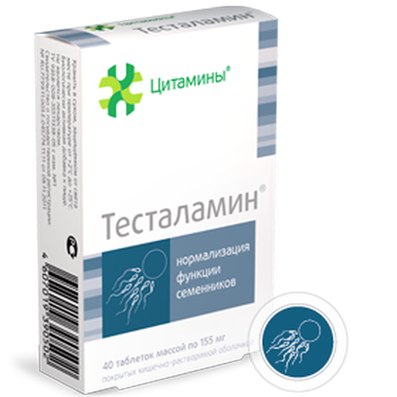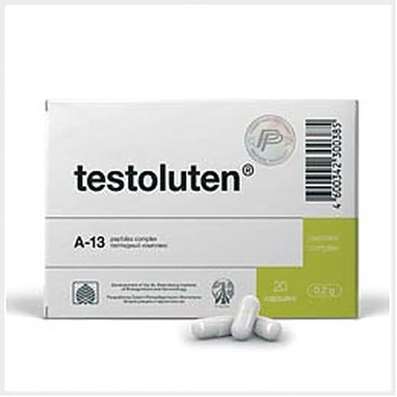Instruction for use: Duloxetine
I want this, give me price
Latin name: Duloxetinum (genus. Duloxetini)
Chemical name
(γS) -N-Methyl-γ- (1-naphthyloxy) -2-thiophenepropanamine (as hydrochloride)
Gross formula
C18H19NOS
CAS code
116539-59-4
Application in pregnancy and lactation
The action category for fetus by FDA is C.
Model clinical-pharmacological article 1
Pharmacotherapy. Inhibits the reuptake of serotonin and norepinephrine, resulting in increased serotonergic and noradrenergic neurotransmission in the central nervous system. Weakly inhibits the capture of dopamine, without having a significant affinity for histaminergic, dopaminergic, cholinergic and adrenergic receptors. Duloxetine has a central mechanism for suppressing the pain syndrome, which is primarily manifested by an increase in the threshold of pain sensitivity in the pain syndrome of neuropathic etiology.
Pharmacokinetics. Well absorbed when taken orally. Suction begins 2 hours after taking the drug. Tmax - 6 h. Food intake does not affect the value of Cmax, but increases TCmax to 10 h, which indirectly reduces the degree of absorption (by approximately 11%). The connection with plasma proteins is more than 90% (mainly with albumin and acid alpha-1 glycoprotein). Renal and hepatic insufficiency do not affect the degree of binding to proteins. It is actively metabolized, metabolites do not have pharmacological activity and are mainly excreted in the urine. Both CYP2D6 and CYP1A2 catalyze the formation of two major metabolites (glucuron conjugate of 4-hydroxyduloxetine, sulfate conjugate of 5-hydroxy-6-methoxyduloxetine). T1 / 2 - 12 h, ground clearance - 101 l / h. Differences in pharmacokinetics in men and women (duloxetine clearance lower in women), as well as in middle-aged and elderly patients (increase in AUC and T1 / 2 in the elderly) are revealed, but this does not require a dose adjustment depending on the sex or age of the patients. In patients with end-stage CRF on hemodialysis, Cmax and AUC of duloxetine increase 2-fold. In patients with clinical signs of hepatic insufficiency, the metabolism and elimination of duloxetine is observed. After a single dose of 20 mg of duloxetine in 6 patients with cirrhosis of the liver with moderate impairment of liver function (class B in Child-Pugh), the clearance of duloxetine increased by 15%, AUC by 5-fold, T1 / 2 by 3-fold, Cmax value did not change .
Indications. Depression, diabetic neuropathy (painful form).
Contraindications. Hypersensitivity, liver disease accompanied by hepatic insufficiency, simultaneous reception of nonselective irreversible MAO inhibitors, potent inhibitors of CYP1A2 (fluvoxamine, ciprofloxacin, enoxacin), severe CRF (CC less than 30 ml / min), uncontrolled arterial hypertension, lactation period, age 18 years ( experience of use is absent). For LF containing sucrose (in addition): congenital intolerance to fructose, glucose-galactose malabsorption, sucrose-isomaltose insufficiency.
Carefully. Mania and bipolar disorder (including history), convulsions (including history), intraocular hypertension or the risk of developing an acute angle-closure glaucoma, suicidal thoughts and attempts in an anamnesis, increased risk of hyponatremia (elderly patients, cirrhosis liver, dehydration, reception of diuretics), pregnancy.
Dosing. Inside, regardless of food intake. Capsules should be swallowed whole, not chewing and crushing. Do not add the drug to food or mix it with liquids. this can damage the enteric coating of pellets.
The recommended initial dose is 60 mg once a day. If necessary, it is possible to increase the dose to a maximum dose of 120 mg per day in 2 divided doses.
Side effect. Frequency: very often (1/10 m more), often (more than 1/100 and less than 1/10), infrequently (1/1000 and less than 1/100), rarely (1/10000 and less than 1/1000), very rarely (less than 1/10000), the frequency is unknown (can not be estimated from available data).
From the nervous system: very often - headache, drowsiness; often - dizziness, tremor, retardation, paresthesia, insomnia, unusual dreams, anxiety, agitation; infrequently - dyskinesia, poor quality of sleep, nervousness, myoclonus, impaired concentration, sleep disturbance, apathy, disorientation, bruxism; rarely - mania, aggressiveness, anger; the frequency is unknown - serotonin syndrome, seizures, akathisia, psychomotor anxiety, extrapyramidal syndrome, suicidal attempts, suicidal thoughts, hallucinations.
From the side of the digestive system: very often - nausea, dryness of the oral mucosa; often - diarrhea, constipation, vomiting, dyspepsia, flatulence, abdominal pain; infrequently - gastroenteritis, stomatitis, gastritis, eructation, taste disorder, hepatitis, acute liver failure, increased activity of "liver" transaminases (ALT, AST, APF); rarely - unpleasant odor when breathing, unchanged blood in the feces; frequency unknown - gastrointestinal bleeding, jaundice, liver failure.
From the genitourinary system: often - erectile dysfunction, decreased libido, a change in the ability to test the feelings of orgasm; infrequent urine, intermittent urination, dysuria, nocturia, polyuria, decreased urine flow, impaired sexual function, impaired ejaculation, incl. delayed ejaculation, gynecological bleeding; rarely - symptoms of menopause; frequency unknown - change in odor of urine.
From the CVS: often - palpitations, "hot flashes" of blood; infrequently - tachycardia, syncope and orthostatic hypotension (reported only at the beginning of treatment), increased blood pressure, cold extremities; rarely - supraventricular arrhythmia, predominantly atrial fibrillation; frequency unknown - hypertensive crisis.
From the senses: often - blurred vision, tinnitus; infrequently - impaired vision, mydriasis, vertigo, pain in the ears; rarely - glaucoma.
From the respiratory system: often - yawning; infrequently - epistaxis, sensation of compression of pharynx.
On the part of the skin: often - rash, excessive sweating, night sweats, infrequently - photosensitivity, increased tendency to subcutaneous hemorrhage, contact dermatitis, urticaria, cold sweat; the frequency is unknown - angioedema, Stevens-Johnson syndrome.
From the musculoskeletal system: often - muscle spasm, musculoskeletal pain, muscular stiffness; infrequent - muscle twitching; rarely - trism.
From the endocrine system: rarely - hypothyroidism.
From the side of metabolism: often - a decrease in appetite; infrequently - hyperglycemia (reported mainly in patients with diabetes mellitus); rarely - dehydration, syndrome of inadequate secretion of antidiuretic hormone, hyponatremia.
Infections: infrequently - laryngitis.
Other: often - fatigue, weight loss; infrequently - weight gain, malaise, gait disturbance, sensitivity disturbance, sensation of cold, sensation of heat, thirst, chills, increased CK; rarely - hypercholesterolemia; frequency unknown - chest pain.
Allergic reactions: infrequently - hypersensitivity reactions; rarely anaphylactoid reactions.
With abrupt cancellation, the "withdrawal" syndrome, the most frequent symptoms of which were dizziness, sensory disturbances (including paresthesia), sleep disorders (including insomnia, intense dreams), agitation or anxiety, nausea and / or vomiting , tremor, headache, irritability, diarrhea, hyperhidrosis, vertigo.
Overdose. Symptoms: vomiting and decreased appetite, tremor, clonic convulsions, ataxia.
Treatment: symptomatic and supportive. Control of SSS and other indicators of vital activity. The specific antidote is not known.
Several cases of overdose were reported with a single-dose oral intake up to 1400 mg of the drug that did not have fatal consequences.
Interaction. Simultaneous use of duloxetine (60 mg twice daily) did not significantly affect the pharmacokinetics of theophylline metabolized by CYP1A2.
Simultaneous administration of duloxetine with potential inhibitors of CYP1A2 may lead to an increase in the concentration of duloxetine. The CYP1A2 inhibitor fluvoxamine (100 mg once a day) reduces plasma clearance of duloxetine by approximately 77% and increases AUC by a factor of 6, so duloxetine should not be used in combination with potential inhibitors of CYP1A2, such as fluvoxamine.
Duloxetine is a moderate inhibitor of CYP2D6. When taking duloxetine in a dose of 60 mg 2 times a day, together with a single dose of desipramine (substrate CYP2D6), the AUC of desipramine rises 3-fold. Simultaneous administration of duloxetine (40 mg twice daily) increases the tolterodine AUC (2 mg twice daily) by 71%, but does not affect the pharmacokinetics of the 5-hydroxyl metabolite. Caution should be exercised when using duloxetine with drugs that are metabolized primarily by the CYP2D6 system and have a narrow therapeutic index.
The simultaneous use of duloxetine with potential inhibitors of CYP2D6 can lead to an increase in the concentrations of duloxetine.
Paroxetine (20 mg once a day) reduces the clearance of duloxetine by about 37%. Care should be taken when using duloxetine with CYP2D6 inhibitors.
Caution should be exercised when duloxetine is used concomitantly with other drugs that affect the central nervous system (including benzodiazepines, antipsychotic drugs, phenobarbital, antihistamines with sedative effect, ethanol), especially with a similar mechanism of action.
The simultaneous use of duloxetine with drugs, which are highly binding to plasma proteins, can lead to an increase in the concentration of free fractions of both drugs.
In patients receiving a serotonin reuptake inhibitor in combination with nonselective irreversible MAO inhibitors, there have been cases of development of severe adverse reactions (hyperthermia, muscle rigidity, myoclonus, peripheral disorders with possible abrupt fluctuations in vital signs and changes in mental status, including marked excitation with transition in delirium and coma) sometimes with a fatal outcome. These reactions were also observed in patients who, shortly before the appointment of the MAO inhibitor, the serotonin reuptake inhibitor was canceled. In some cases, patients exhibited symptoms characteristic of malignant neuroleptic syndrome. Effects of combined use of duloxetine and MAO inhibitors have not been evaluated in either humans or animals. Therefore, given the fact that duloxetine is an inhibitor of both serotonin and norepinephrine, duloxetine should not be taken in combination with nonselective irreversible MAO inhibitors or for at least 14 days after they are discontinued. Based on the duration of T1 / 2 duloxetine, a break should be made for at least 5 days after the end of duloxetine intake before taking MAO inhibitors. Regarding selective reversible MAO inhibitors, such as moclobemide, the risk of developing serotonin syndrome is low, however, concurrent use of the drug with selective reversible MAO inhibitors is not recommended.
Anticoagulants and antiplatelet drugs - the risk of bleeding. There were reported cases of an increase in the INR rate when used concomitantly with warfarin.
In rare cases, the development of serotonin syndrome was reported with the use of SSRIs (including paroxetine, fluoxetine) with serotonergic drugs. Caution should be exercised when using duloxetine with serotonergic antidepressants, such as SSRIs, tricyclic antidepressants, such as clomipramine and amitriptyline, St. John's wort, perforated, venlafaxine or triptane, tramadol, pethidine and tryptophan.
Special instructions. A systematic evaluation of the drug intake in a dose exceeding 120 mg was not performed.
There have been cases of mydriasis developing with duloxetine, therefore caution should be exercised in prescribing duloxetine to patients with intraocular hypertension or in persons at risk of developing acute, closed-angle glaucoma.
In patients with severe CRF (CC less than 30 ml / min) or severe hepatic insufficiency, an increase in the concentration of duloxetine in plasma is observed. If duloxetine is clinically justified in such patients, lower initial doses of the drug should be used.
With depression, there is a possibility of suicide attempts, which can persist until a stable remission occurs. Careful monitoring of patients at risk is necessary.
Cancellation of the drug should be carried out gradually to avoid the syndrome of "withdrawal".
Due to the lack of experience with duloxetine during pregnancy, the drug should be administered during pregnancy only if the potential benefit to the mother significantly exceeds the potential risk to the fetus. Patients should be warned that in the event of the onset or planning of pregnancy during the treatment with duloxetine, they need to inform their physician about it.
Due to the lack of experience with duloxetine in women during lactation, breastfeeding during duloxetine therapy is not recommended.
In the course of studies of duloxetine, there were no violations of psychomotor reactions, cognitive functions and memory. However, taking the drug may be accompanied by drowsiness. In this regard, patients taking duloxetine should exercise caution when engaging in potentially dangerous activities that require increased concentration and speed of psychomotor reactions, including. driving.

 Cart
Cart





